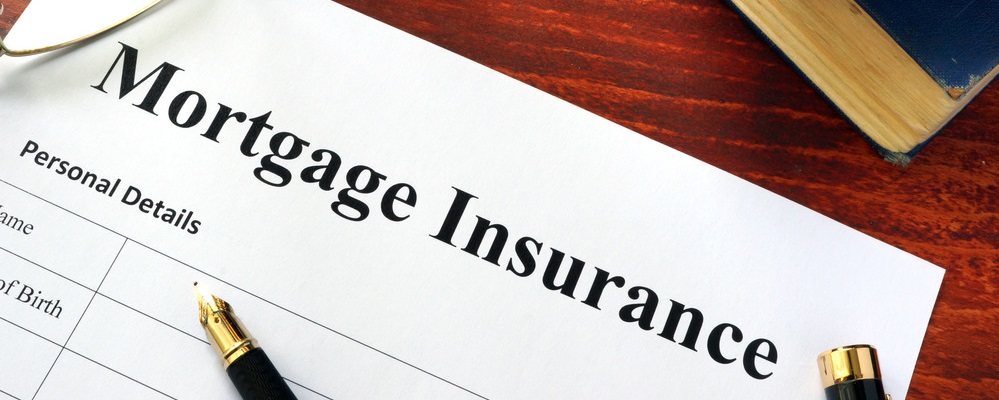
A few common myths and misconceptions often confuse homeowners about Reverse mortgages. An experienced lender like New American Funding (NAF) can help you navigate these misconceptions. Read on to learn what a Reverse mortgage is and the truths around common beliefs about this loan.
What is a Reverse Mortgage?
A Reverse mortgage is a loan available to qualifying homeowners aged 62 or older, allowing them to convert a portion of their home equity into cash. It’s a valuable financial tool for seniors looking to access their home equity during retirement without selling their property or taking on additional monthly payments. Then upon death, moving, or the sale of the home, the proceeds from the sale pay off the reverse mortgage balance, and the remaining equity distributes to the borrower or their heirs.
Now that you know what a Reverse mortgage is, let’s look at what it is not by diving into common myths and misconceptions. You’ll also discover how a Reverse mortgage works in this article.
Myth 1: You Can Lose Your Home
One of the most persistent myths about Reverse mortgages is that borrowers can lose their homes. This misconception stems from a lack of understanding of the Reverse mortgage process and the safeguards to protect borrowers. If the borrower continues to live in the home, maintains the property, and pays property taxes and insurance, they will not lose their home.
Reverse mortgages have several built-in protections to ensure borrowers can continue living in their homes without fear of losing them. There are four Reverse mortgage safeguards:
- Non-Recourse Feature: Reverse mortgages are non-recourse loans, meaning that the borrower or their estate is not responsible for any amount of the loan that exceeds the home’s value when sold or otherwise disposed of. This feature means the lender cannot go after the borrower’s other assets to cover the loan balance.
- Mandatory Counseling: Borrowers must attend a counseling session with a HUD-approved counselor before obtaining a Reverse mortgage. This session helps borrowers understand the ins and outs of Reverse mortgages, their obligations as borrowers, and the potential risks and benefits associated with the loan. A Loan Officer with NAF can help guide you through the process.
- Loan Maturity Triggers: Reverse mortgages are due and payable when certain maturity events occur. These events include the borrower passing away, selling the home, or permanently moving out. The loan will not become due and payable as long as the borrower continues to live in the house and meets their other obligations.
- Federal Insurance: The most common type of Reverse mortgage, the Home Equity Conversion Mortgage (HECM), is insured by the Federal Housing Administration (FHA). This insurance protects both borrowers and lenders by ensuring that borrowers will continue to receive their loan payments even if the lender becomes insolvent, and it guarantees that the loan balance will not exceed the home’s value when it is sold or otherwise disposed of.
The myth that borrowers can lose their homes through a Reverse mortgage is a misunderstanding and misinformation. As long as borrowers meet their obligations, live in the house, maintain the property, and pay property taxes and insurance, they can continue enjoying the benefits of a reverse mortgage without fear of losing their homes.
Myth 2: Your Heirs Will Be Liable for Repaying the Loan
This misconception has led many potential borrowers to shy away from Reverse mortgages, fearing that they may leave their loved ones with a hefty financial burden. Here are two features of this loan that prevent that from happening:
- Non-Recourse Feature – Reverse mortgages come with a non-recourse feature, which means that the borrower’s heirs will never owe more than the home’s value at the time of repayment. This essential safeguard protects the borrower’s family from inheriting any debt beyond the home’s value. Even if the loan balance exceeds the home’s value, the heirs will not be responsible for the difference.
- Repayment Options for Heirs – When a borrower passes away or leaves the home permanently, the Reverse mortgage becomes due. At this point, the heirs have several options for repaying the loan:
- Sell the home: The most common repayment method is to sell the house. The proceeds from the sale pay off the loan balance, and any remaining funds distribute to the heirs. In this scenario, the heirs are not responsible for any additional repayment.
- Refinance the Reverse mortgage: If the heirs want to keep the home, they can refinance it into a traditional mortgage or another financial product. Refinancing allows them to repay the Reverse mortgage loan balance and assume home ownership.
- Pay off the loan with other funds: Sometimes, heirs may pay off the Reverse mortgage loan balance using additional funds, such as savings or proceeds from life insurance policies. Using other funds enables them to retain ownership of the home without having to sell it or refinance the loan.
Discussing the Reverse mortgage with heirs so they understand the features and the myths is also a great way to ensure you are on the same page. As well as working with a lender like NAF, who can also help you understand the safeguards of this mortgage.
Myth 3: You Have A New Monthly Payment
One of the most significant misconceptions about Reverse mortgages is that they create an additional financial burden by adding a new monthly payment. Reverse mortgages provide financial relief and flexibility for homeowners, particularly seniors who need extra income during retirement.
Here’s how this mortgage provides financial relief:
- Extra Money On Hand. This type of mortgage provides older homeowners additional income during their retirement years by allowing qualified borrowers to convert their home equity into cash. The loan amount is determined based on several factors, including the borrower’s age, the home’s appraised value, and current interest rates. The homeowner can receive the loan proceeds as a lump sum, monthly payments, a line of credit, or a combination of these options.
- No Monthly Payments. Unlike traditional mortgages, borrowers don’t need to make monthly mortgage payments. However, they must maintain their property, pay property taxes, and keep up with homeowner’s insurance.
Here’s how the mortgage works over time:
- Loan Amount Increases Over Time. Interest and fees associated with the loan are added to the outstanding balance each month and aren’t due until the borrower’s death, permanent move, or home sale.
- Equity Gets Distributed. Upon death, move, or sale of the home, the proceeds from the sale pay off the Reverse mortgage balance, and the remaining equity goes to the borrower or their heirs.
Not only is the myth of a new monthly payment with Reverse mortgages unfounded, but they provide financial flexibility for homeowners, particularly seniors, without adding the burden of a monthly mortgage payment.
Myth 4: You Don't Qualify Because Your Home Isn't Paid Off
Another common misconception about Reverse mortgages is that homeowners must own their homes outright to qualify for a Reverse mortgage. This myth discourages many potential borrowers from considering this financial tool. In reality, a Reverse mortgage can pay off an existing mortgage, and the home doesn’t need to be entirely debt-free.
Here’s how to use a Reverse mortgage to pay off an existing mortgage.
If you have a mortgage on your home, you can use the proceeds from a Reverse mortgage to pay it off. First, you must qualify for a Reverse mortgage by meeting these criteria:
- Meet age requirements: Be at least 62 years old.
- Primary Residence: The property must be the borrower’s primary residence.
- Home Equity: The homeowner must have a significant amount of equity built up in their home, typically at least 50%.
- Financial Capability: Borrowers should demonstrate the ability to cover property taxes, homeowner’s insurance, and home maintenance costs.
By using a Reverse mortgage to pay off an existing mortgage, homeowners can enjoy several benefits:
- No Monthly Mortgage Payments: Homeowners eliminate their monthly mortgage payments by paying off the existing mortgage, providing financial relief and flexibility.
- Increased Cash Flow: The remaining funds from the Reverse mortgage can supplement retirement income, pay off other debts, or cover unexpected expenses.
- Financial Security: A Reverse mortgage can provide financial security for homeowners in retirement, ensuring a steady income stream and reducing dependence on other sources of funds.
The belief that a home must be paid off to qualify for a Reverse mortgage is a myth. A Reverse mortgage can pay off an existing mortgage, eliminating the need for monthly mortgage payments and increasing a homeowner’s financial flexibility
Another common misconception about Reverse mortgages is that homeowners must own their homes outright to qualify for a Reverse mortgage. This myth discourages many potential borrowers from considering this financial tool. In reality, a Reverse mortgage can pay off an existing mortgage, and the home doesn’t need to be entirely debt-free.
Here’s how to use a Reverse mortgage to pay off an existing mortgage.
If you have a mortgage on your home, you can use the proceeds from a Reverse mortgage to pay it off. First, you must qualify for a Reverse mortgage by meeting these criteria:
- Meet age requirements: Be at least 62 years old.
- Primary Residence: The property must be the borrower’s primary residence.
- Home Equity: The homeowner must have a significant amount of equity built up in their home, typically at least 50%.
- Financial Capability: Borrowers should demonstrate the ability to cover property taxes, homeowner’s insurance, and home maintenance costs.
By using a Reverse mortgage to pay off an existing mortgage, homeowners can enjoy several benefits:
- No Monthly Mortgage Payments: Homeowners eliminate their monthly mortgage payments by paying off the existing mortgage, providing financial relief and flexibility.
- Increased Cash Flow: The remaining funds from the Reverse mortgage can supplement retirement income, pay off other debts, or cover unexpected expenses.
- Financial Security: A Reverse mortgage can provide financial security for homeowners in retirement, ensuring a steady income stream and reducing dependence on other sources of funds.
The belief that a home must be paid off to qualify for a Reverse mortgage is a myth. A Reverse mortgage can pay off an existing mortgage, eliminating the need for monthly mortgage payments and increasing a homeowner’s financial flexibility.
Myth 5: You Can't Sell Your Home
Many people believe that having a Reverse mortgage means they cannot sell their home. A Reverse mortgage does not prevent homeowners from selling their property; it might even be a strategic financial decision in some cases.
When you decide to sell your home with a Reverse mortgage, repay the loan using the proceeds from the sale. The remaining equity will belong to you or your heirs after paying off the loan balance, interest, and fees. This process gives homeowners the flexibility to sell their home when they see fit, especially if the house has appreciated, and can help them make the most of their investment.
An experienced Loan Officer, like at NAF, can help you understand if a Reverse mortgage is right for you.
Myth 6: Your House Must Be Debt-Free to Qualify for a Reverse Mortgage
Contrary to popular belief, having an existing mortgage on your home does not disqualify you from obtaining a Reverse mortgage. One of the primary uses of a Reverse mortgage is to help borrowers pay off their existing mortgage and free up their monthly cash flow.
When you apply for a Home Equity Conversion Mortgage (HECM), the most common type of Reverse mortgage, any existing liens or mortgages on your property must be paid in full when closing. This rule ensures that the Reverse mortgage will be the only loan remaining on the property.
Consulting with a HUD-approved counselor and a financial advisor or attorney can help you determine if a Reverse mortgage is right in your financial circumstance.
Myth 7: A Reverse Mortgage Is a Government Benefit
One common misconception about Reverse mortgages is that they are government benefits. This myth likely arises from the fact that the most popular Reverse mortgage program, the Home Equity Conversion Mortgage (HECM), is insured by the Federal Housing Administration (FHA). Reverse mortgages are not government benefits, but loans provided by private lenders like NAF.
The FHA’s role in Reverse mortgages is to provide insurance for the HECM loans. This insurance helps protect both the borrower and the lender in case of default or other issues arising during the loan term. The FHA insurance guarantees that the borrower will receive their loan proceeds as agreed, and it also ensures reimbursement to the lender for any losses incurred due to the borrower’s default.
FHA insurance adds an extra layer of security for all parties involved, making the Reverse mortgage process more reliable and attractive to potential borrowers and lenders. The FHA’s involvement does not turn Reverse mortgages into government benefits making this another myth.
Myth 8: To Qualify For a Reverse Mortgage, Both Spouses Need To Be 62+
To qualify for a Reverse mortgage, only one spouse needs to be 62 years of age or older. If one spouse is under 62, they are the non-borrowing spouse. However, there are specific implications regarding the loan repayment terms for the non-borrowing spouse that couples should be aware of:
- If the borrowing spouse passes away, the non-borrowing spouse has 90 days to put the property in their name and can stay home for the rest of their life.
- If the non-borrowing spouse reaches the age of 62, they can apply for their reverse mortgage, and the funds available would then be accessible to them.
Myth 9: You Have Limited Options For Receiving And Utilizing The Loan Proceeds From a Reverse Mortgage
One common myth surrounding Reverse mortgages is that borrowers have limited choices regarding receiving and utilizing the loan proceeds. In reality, borrowers have various options when determining how to receive their funds and how to spend them.
Options for receiving loan proceeds include:
- Lump sum: Borrowers can receive the entire loan amount upfront as a single payment. This option is helpful for those who need a large amount of money for a specific purpose, like paying off an existing mortgage or making a large purchase.
- Monthly payments: Borrowers can opt for fixed monthly payments for a specified period or as long as they live in the home. This option provides a steady income stream to help supplement retirement income, cover living expenses, or pay for healthcare costs.
- Line of credit: Borrowers can establish a line of credit that allows them to access the funds as needed. This option offers flexibility, as borrowers can draw on the line of credit whenever they require additional funds, and the available credit can grow over time.
- Combination of Options: Borrowers can also choose various options, such as receiving a portion of the loan proceeds as a lump sum and the remaining amount as a line of credit or monthly payments.
You can utilize the loan proceeds in various ways, including:
- Supplementing Retirement Income: Many borrowers use the proceeds to supplement their retirement income, ensuring they have enough money to cover their living expenses and maintain their desired lifestyle.
- Paying off Debt: Borrowers can use the loan proceeds to pay off existing debts, such as credit card balances, car loans, or even their original mortgage. By eliminating these debts, borrowers can reduce their monthly expenses and improve their financial situation.
- Funding Home Improvements: The loan proceeds can help make necessary repairs or improvements to the borrower’s home, such as installing a new roof, updating the kitchen, or making the house more accessible for aging in place.
- Covering Healthcare Costs: Reverse mortgage funds can help cover the costs of healthcare expenses, including prescription medications, in-home care, or long-term care facilities.
- Supporting Family Members: Some borrowers choose to use the loan proceeds to provide financial assistance to their children, grandchildren, or other family members, such as helping with college tuition or providing a down payment for a first home.
The myth that Reverse mortgage borrowers have limited options for receiving and utilizing the loan proceeds is untrue. Borrowers can choose from various payout options and use the funds for any purpose, allowing them to tailor the Reverse mortgage to their needs and financial goals.
Myth 10: Reverse Mortgages Are Designed To Take Advantage of Retirees
People misunderstand Reverse mortgages giving rise to the myth that they take advantage of retirees. In reality, retirement and Reverse mortgages go well together. These mortgages are legitimate financial tools designed to help seniors access their home equity during retirement.
There are essential financial obligations and considerations associated with Reverse mortgages that a borrower should consider. Expenses and fees include:
- Origination fees
- Property taxes
- Mortgage insurance premiums
- Interest rates
- Closing costs
- Decrease in home’s equity which could affect inheritance to heirs
- Other loan requirements
Despite these considerations, many borrowers find that the benefits of a Reverse mortgage outweigh the potential drawbacks allowing them to enjoy their golden years without worrying about dwindling finances.
FAQs
Is it Hard to Sell a House That has a Reverse Mortgage?
Selling a house with a Reverse mortgage is similar to selling a traditional one. You can pay off the Reverse mortgage loan with the proceeds from the sale, and any remaining equity will belong to the homeowner or their heirs.
How Does a Reverse Mortgage Work?
A Reverse mortgage allows qualifying homeowners aged 62 and older to convert a portion of their home equity into cash. The loan does not require monthly mortgage payments; payment happens when the borrower sells the home, moves out, or passes away.
Do People Lose Their Homes With a Reverse Mortgage?
If the borrower continues to live in the home, maintains the property, and pays property taxes and insurance, they will not lose their home due to a Reverse mortgage.
Who Benefits Most From a Reverse Mortgage?
Qualified homeowners aged 62 and older, with significant home equity, and looking for additional income during retirement may benefit most from a Reverse mortgage. It’s essential to consider your financial situation and consult with a trusted lender like New American Funding to determine if a Reverse mortgage is the right option.




